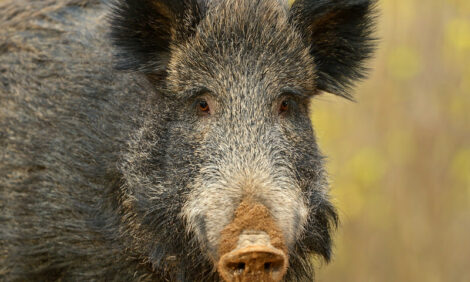



CME: Sharp Fall in Pork Packer Margins
US - CME's Daily Livestock Report for 29th October 2008.In another clear demonstration of the modern link between commodities, energy and the general
economy, CME Group corn futures were sharply higher on Wednesday in response to sharply higher oil
prices which were themselves a response to the Fed’s 0.5% interest rate cut. In perhaps the greatest understatement
from a group particularly noted for understatements, the announcement included the following:
“The pace of economic activity appears to have slowed markedly, owing importantly to a decline in
consumer expenditures. Moreover, the intensification of financial market turmoil is likely to exert additional
restraint on spending.“
Ya’ think?
One note about consumer expenditures: A major driver of slower consumer expenditures on non-fuel
items was, no doubt, record-high fuel prices. But that may is likely changing rapidly. Gasoline in central Iowa
broke below $2 per gallon this week. The national average retail price for all grades/all formulations was quoted
by the Energy Information Administration last week at $2.718/gallon, down from its peak of $4.165/gallon the
week of July 7. That $1.447/gallon price decline means that, based on U.S. gasoline consumption of 9.072 million
barrels (or 381 million gallons) per day in July, U.S. consumers now have $551 million dollars more PER
DAY than they did in July to spend on goods and services. That in itself might be a bit stimulating for the economy,
might it not?
Now back to the livestock/meat sectors — Pork packer margins have fallen sharply in recent
weeks while beef packer margins have remained high relative to both last year and historical averages.
The charts below show our computations for packer gross margins (ie. the value of a carcass plus the value of
the by-products less the value of the animal) for both beef and pork. The charts (see bottom of page) show the meat and
by-product components of these margins over a longer time period.


Beef packer margins have been quite good on a historical basis this year after being abysmal for the
second half of 2007 when JBS Swift was ramping up the second shift at its Greeley, CO plant. Tyson’s closure
of the Emporia, KS plant was a factor in margin improvement but so was the resumption of exports to some key
markets. Whether those exports continue strong remains to be seen but it does appear that beef packers are
managing margins quite effectively and should remain very interested in moving cattle through their plants.
The story is decidedly different for pork packers whose margins have plunged in recent weeks. After
some of the best margins in history and absolutely the best margins ever during summer months, pork plants
have seen below-average gross margins for the first time this year. No wonder last week’s slaughter run of
2.296 million head was lower than one year earlier for the first time in a non-holiday week since May 12, 2007!
The components charts below show a major concern for both beef and pork packers: Declining byproduct
contributions. They have dropped sharply for both beef and pork in recent weeks as the U.S. dollar has
strengthened and, by all reports, tight credit markets have slowed export sales.










